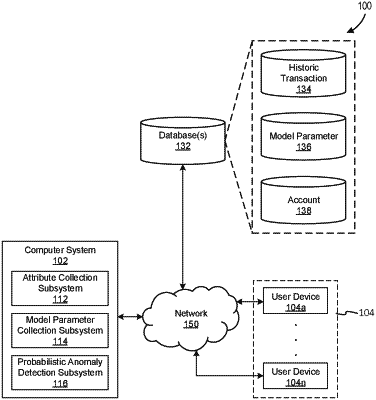| CPC G06F 16/2365 (2019.01) [G06F 16/2379 (2019.01); G06N 7/01 (2023.01); G10L 15/197 (2013.01)] | 20 Claims |

|
1. A system for real-time anomaly detection based on transaction data comprising one or more memory devices storing instructions and one or more processors configured to execute the instructions that, when executed, cause operations comprising:
in response to detecting an occurrence of a transaction associated with a user that is performed after a sequence of previous transactions associated with the user are performed, retrieving current transaction data associated with the transaction and previous transaction data associated with the sequence of previous transactions;
determining a set of attributes based on the current transaction data;
using the set of attributes to query a set of databases to obtain anomaly-related datasets;
executing a probabilistic program to determine a first set of probabilities characterizing a probability of an anomaly occurring based on values of the anomaly-related datasets, the current transaction data, and the previous transaction data;
executing a machine learning model based on the current transaction data and the previous transaction data to determine a second set of probabilities;
determining a difference value between a probability of the first set of probabilities and a probability of the second set of probabilities; and
updating, based on the difference value satisfying a threshold, a record by identifying the transaction as anomalous in the record.
|